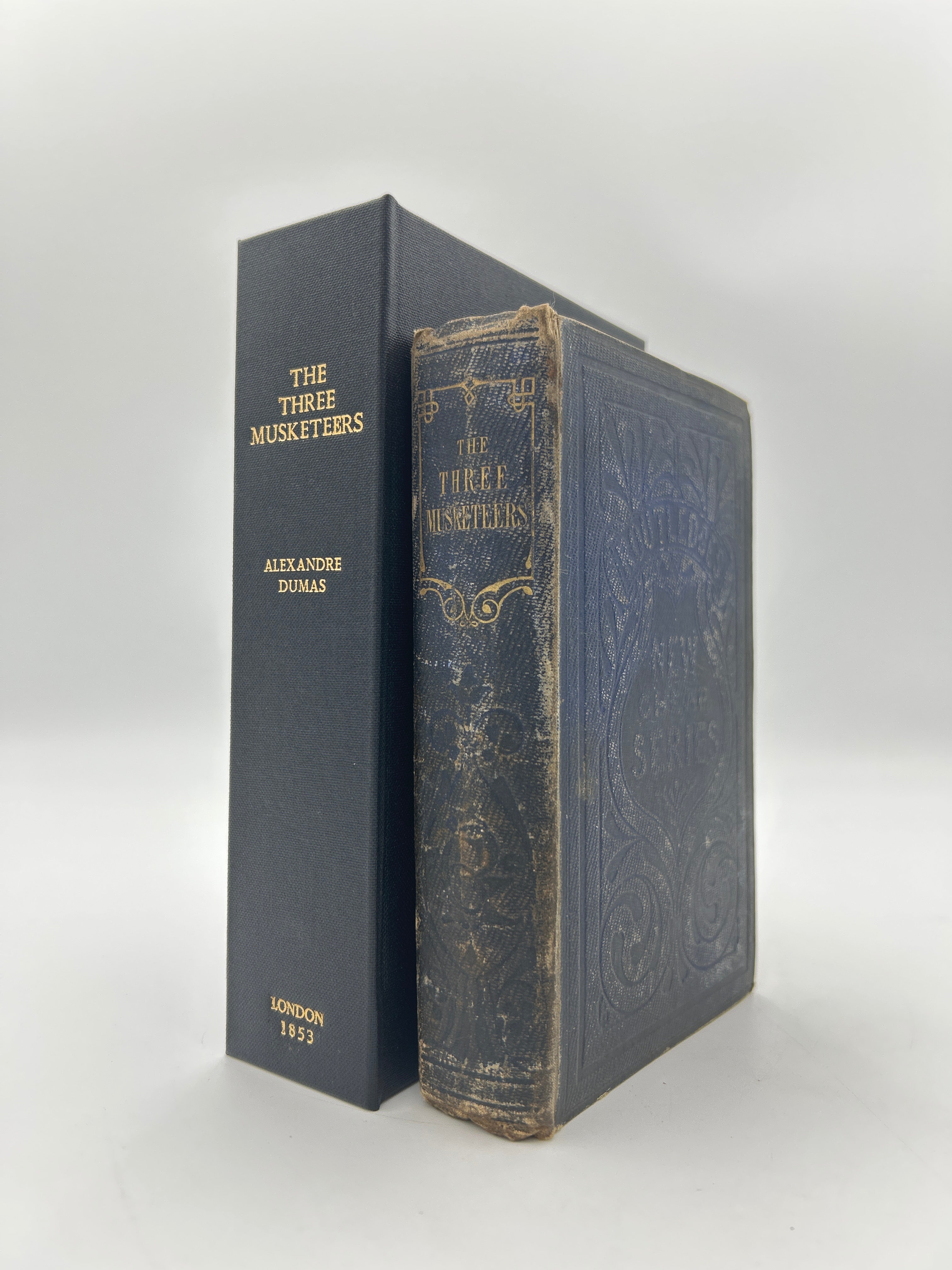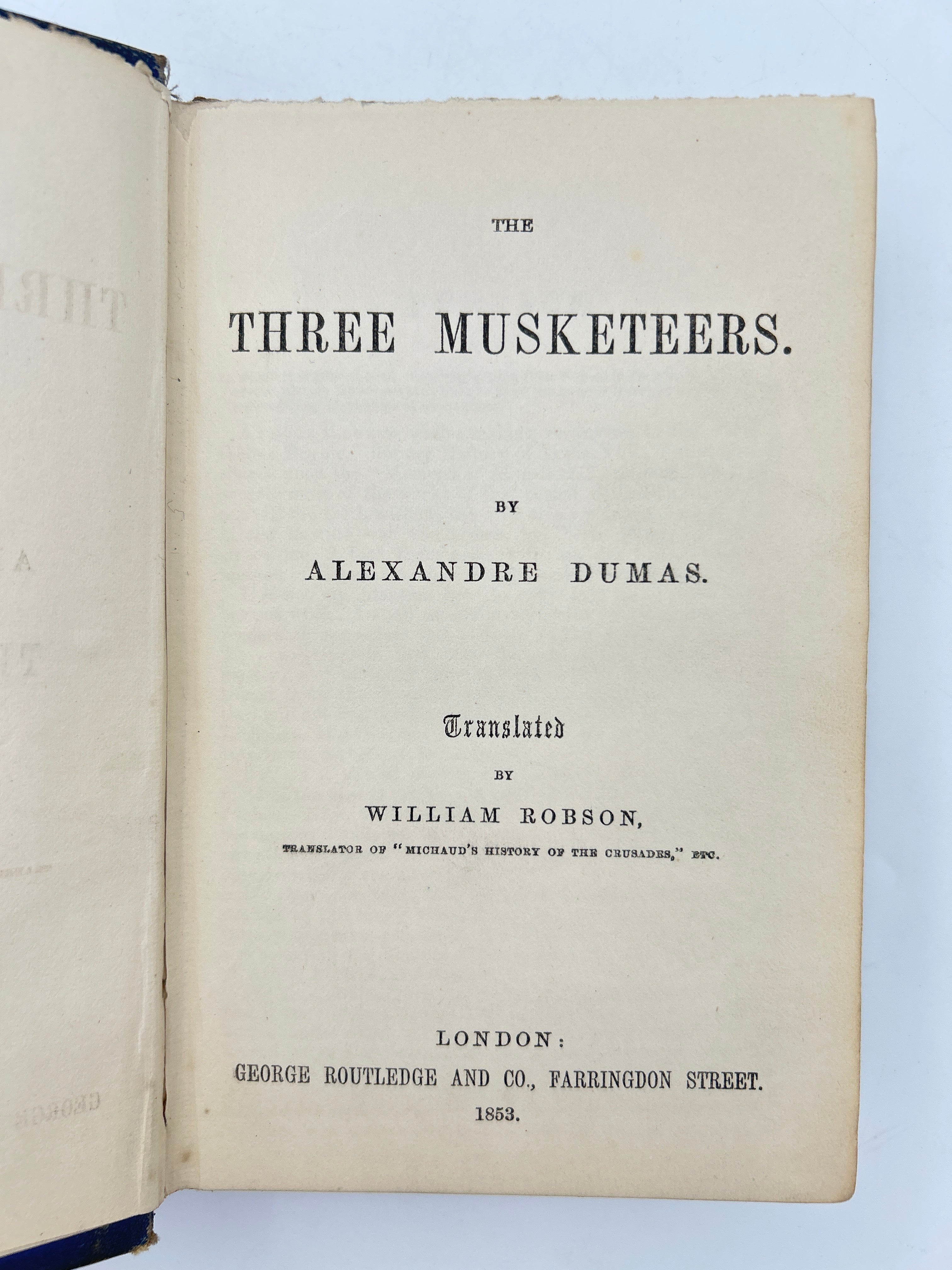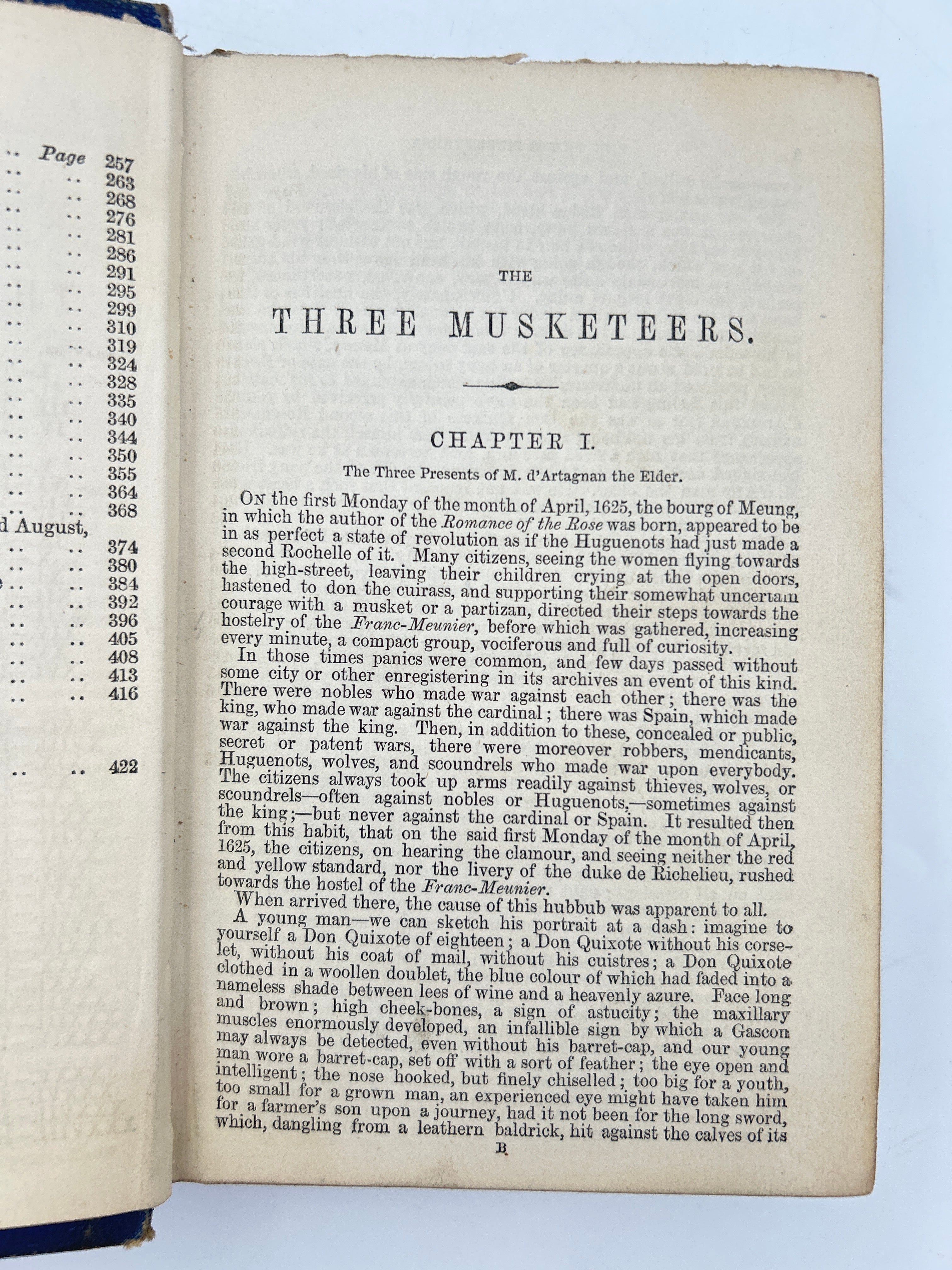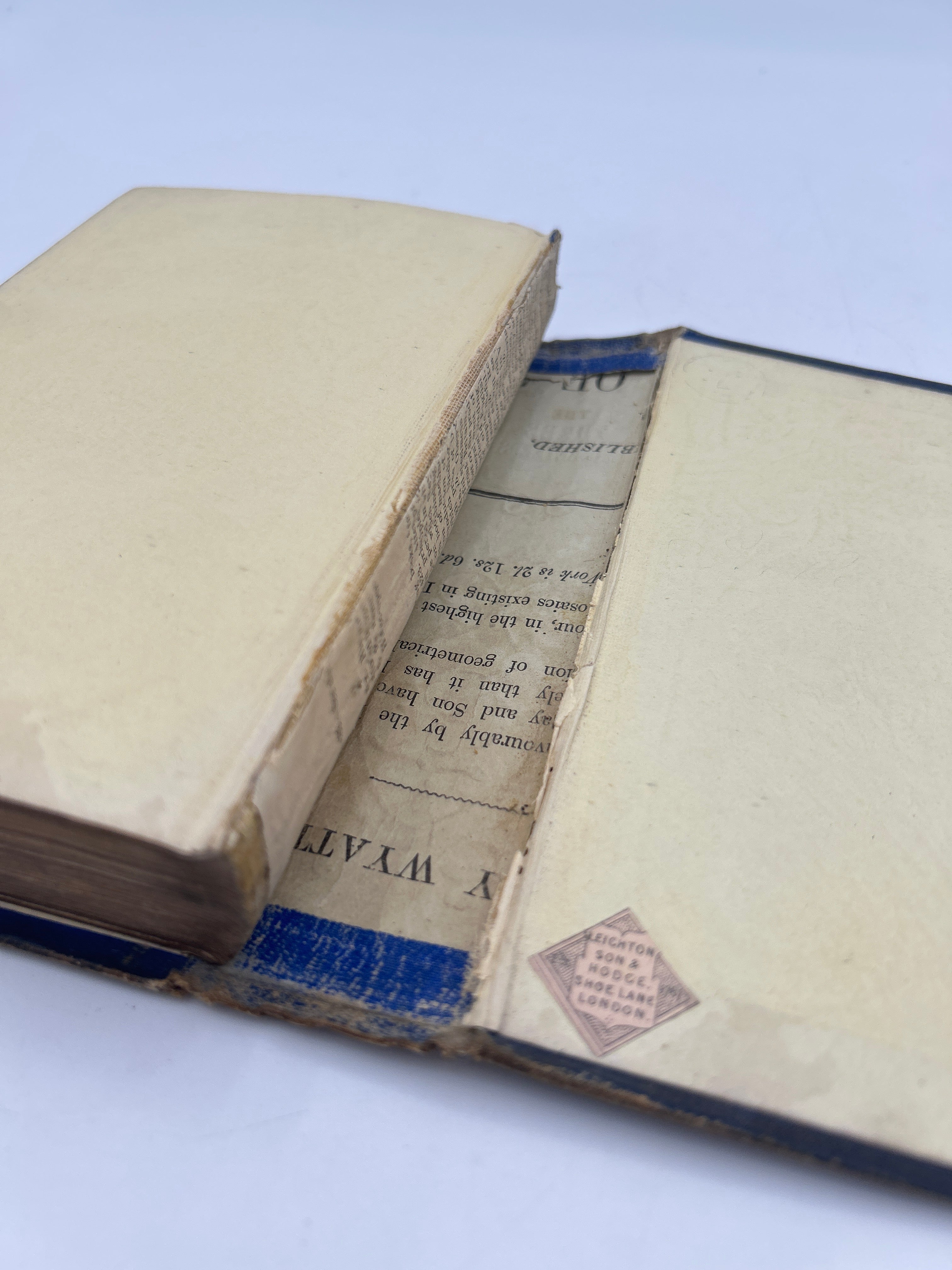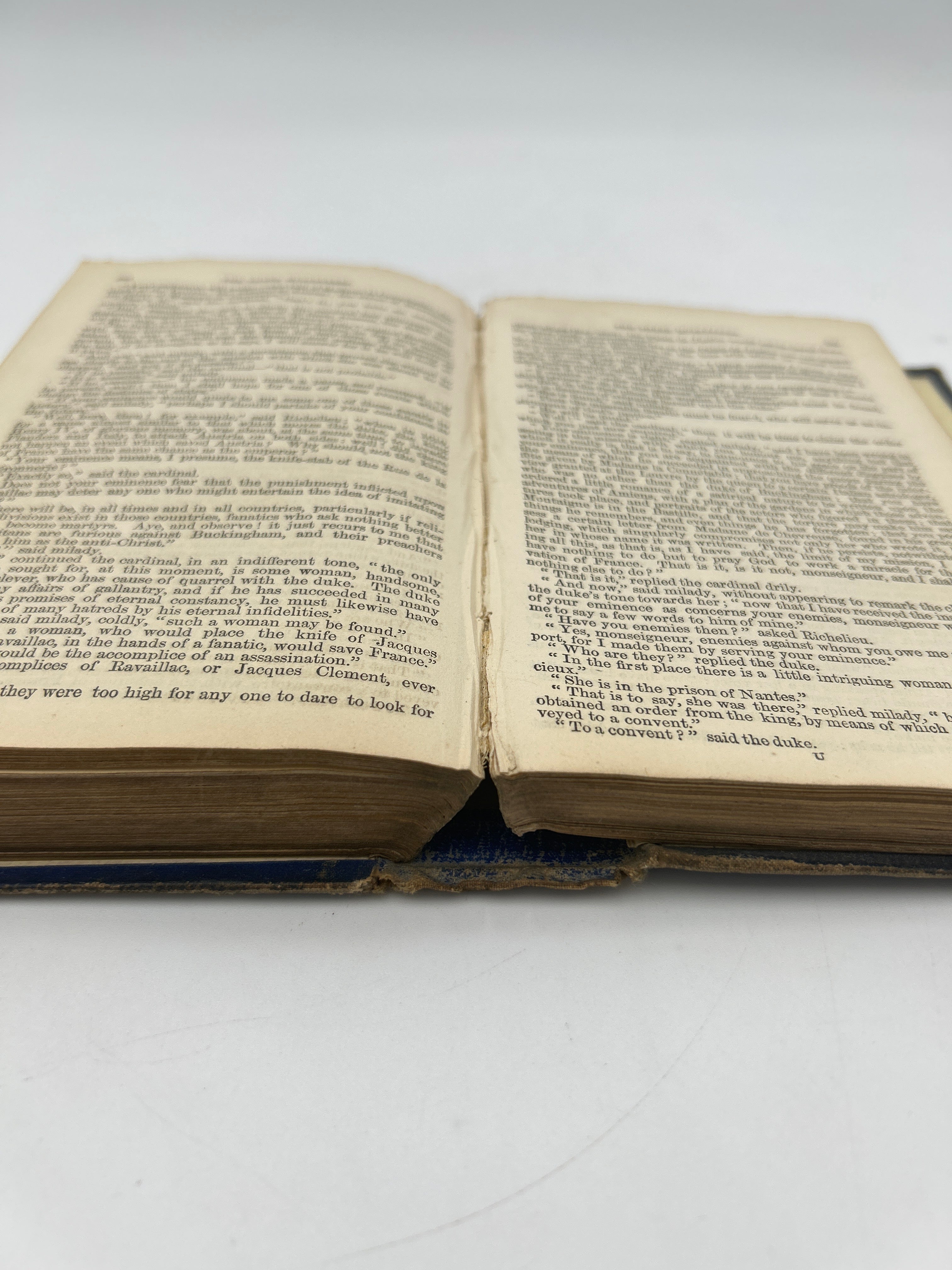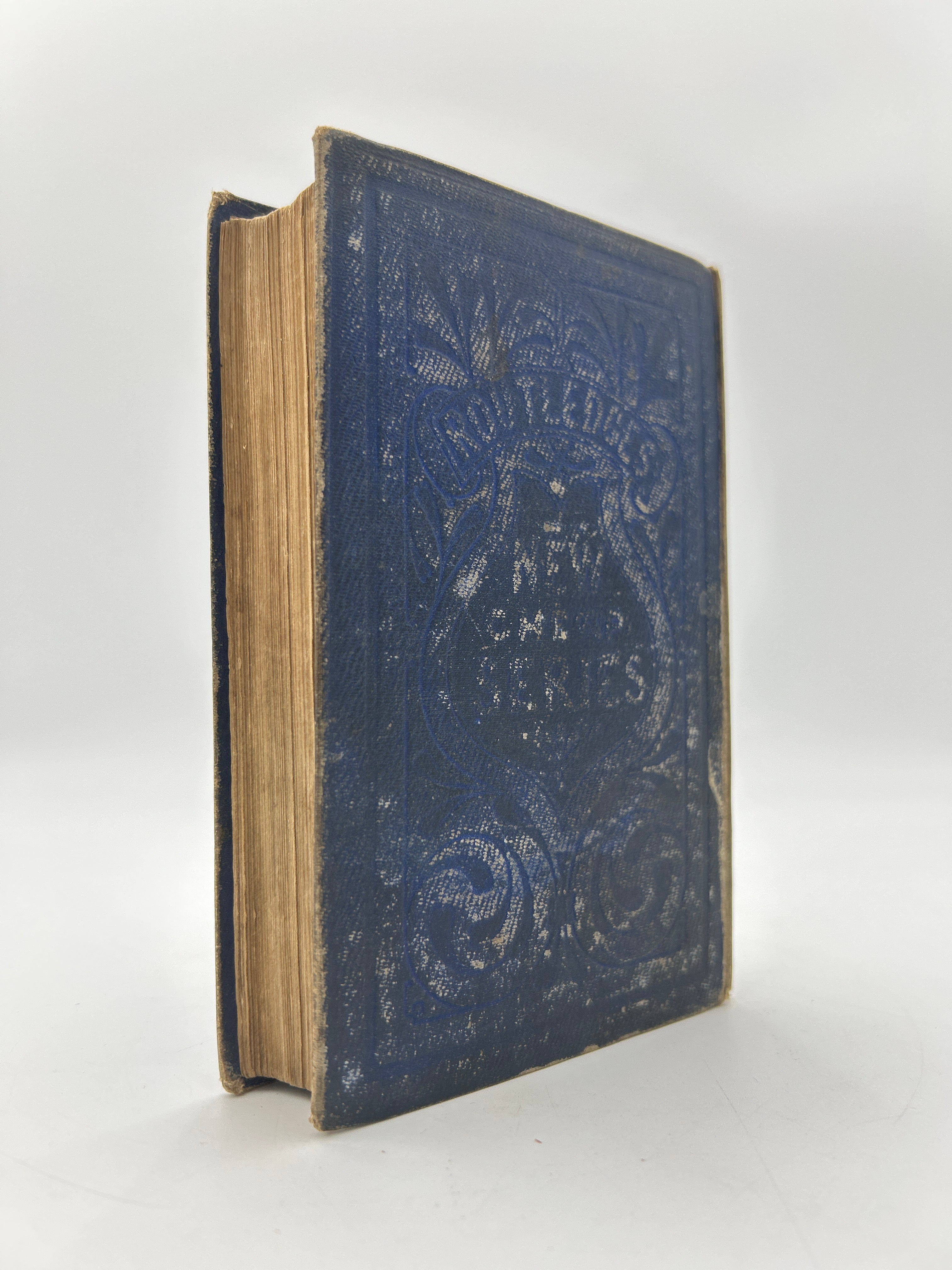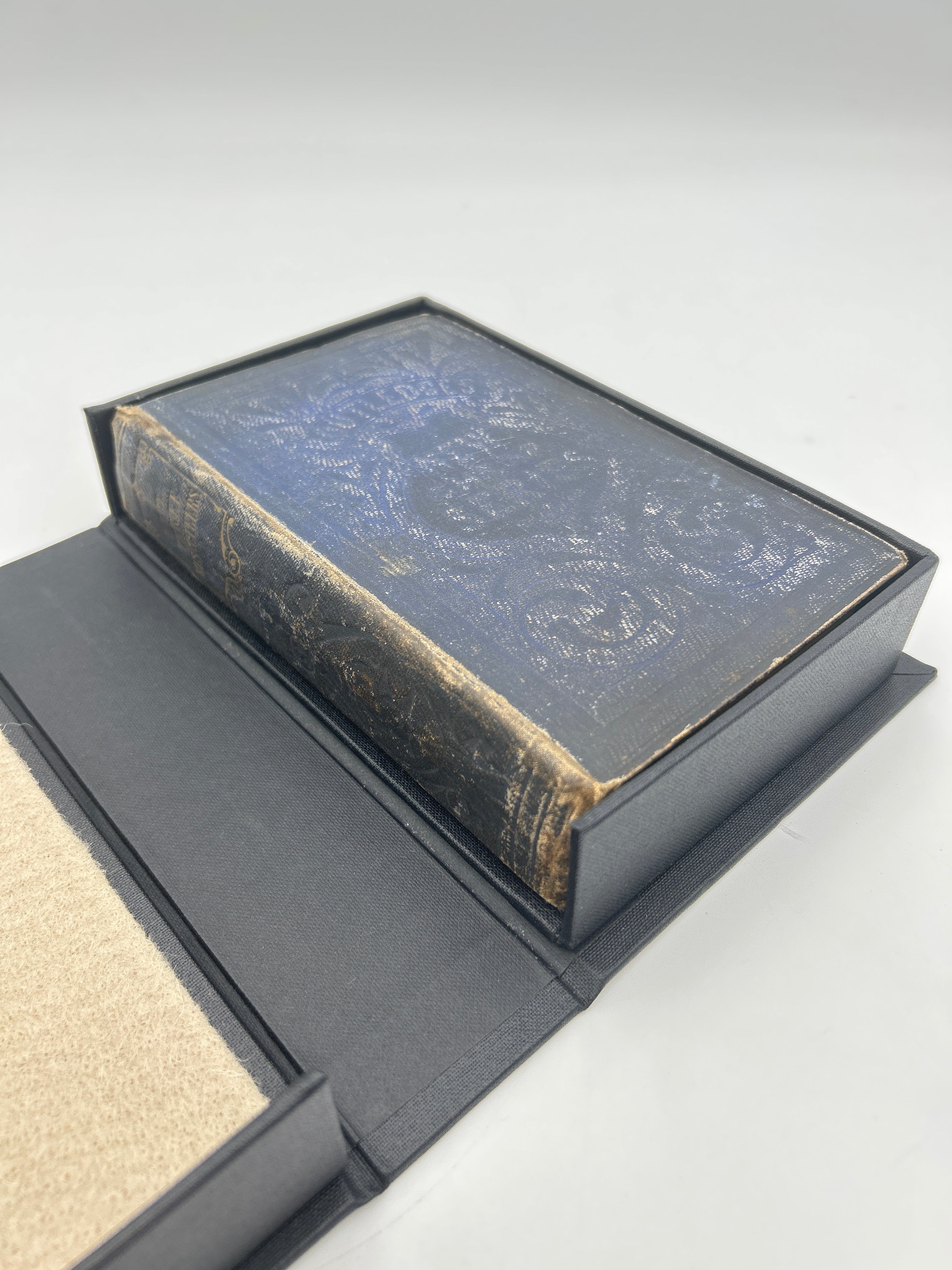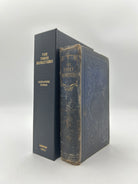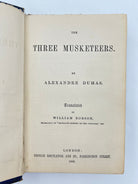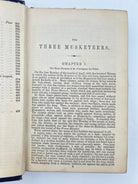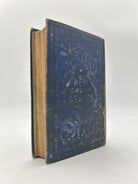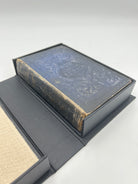The Three Musketeers
Couldn't load pickup availability
5b Alexandre Dumas. Translated by William Robson. London: George Routledge and Co., 1853. Second English Translation.
Notes
The Three Musketeers is a classic historical adventure novel by Alexandre Dumas, first published in 1844. Set in 17th-century France during the reign of Louis XIII, it follows the young and ambitious d'Artagnan as he leaves home to join the elite Musketeers of the Guard. He befriends the legendary trio Athos, Porthos, and Aramis, and together they become embroiled in court intrigue, international politics, and daring escapades, all under the famous motto: "All for one, and one for all." The novel blends swashbuckling action with themes of loyalty, honor, love, and betrayal, making it one of the most enduring and beloved works of historical fiction.
Alexandre Dumas (1802–1870) was a prolific and celebrated French author known for his vivid storytelling, memorable characters, and masterful blend of history and fiction. The son of a general who was born to a Haitian slave, Dumas rose from modest beginnings to become one of the most widely read French writers of the 19th century. He is best known for his adventure novels, including The Three Musketeers, The Count of Monte Cristo, and The Man in the Iron Mask. Dumas often collaborated with ghostwriters, most notably Auguste Maquet, but his flair for drama, character, and plot secured his literary legacy and global fame.
The Three Musketeers was first published in English in 1846, translated by William Barrow and released by Thomas Hodgson in London—marking the first English edition and translation of the novel. A few years later, in 1853, a new English translation by William Robson was published by George Routledge & Co. in London. This edition is recognized as the second English translation of Dumas’s work and became the most influential and widely circulated version in the English-speaking world throughout the 19th century. Robson’s translation, more polished and accessible to Victorian readers, was frequently reprinted and became the standard text in Britain and the U.S. for generations. While not the second edition in a strict bibliographic sense, the 1853 Routledge edition holds historical significance as the debut of this enduring translation.
Description
Navy cloth binding with debossed details and lettering to covers and spine with gilt lettering to spine. Bumped corners and rubbed extremities. Sun fading to spine. Some general rubbing to covers. Loose hinge but fully intact.
